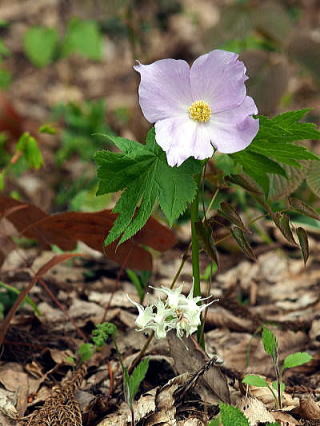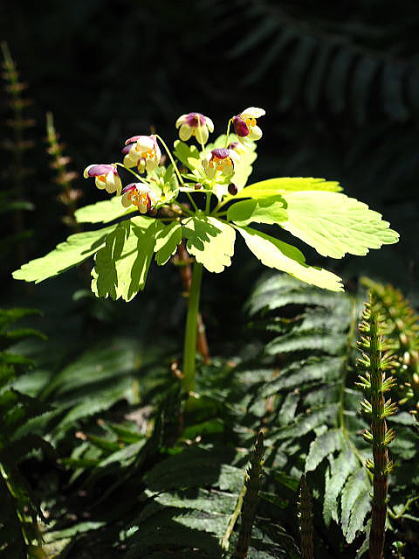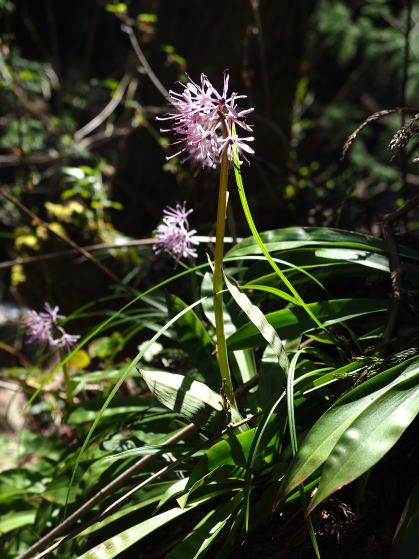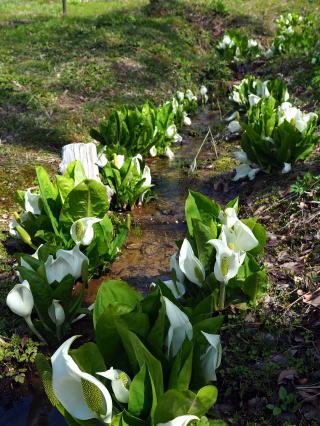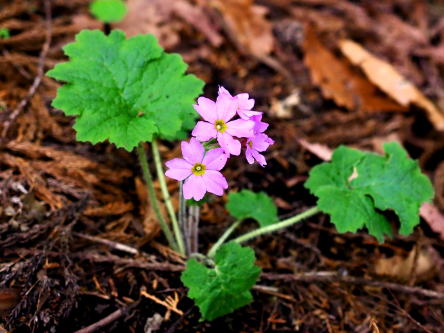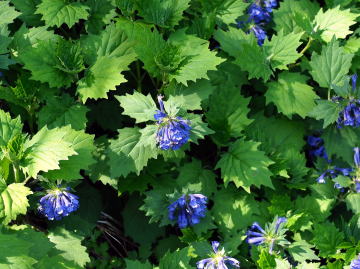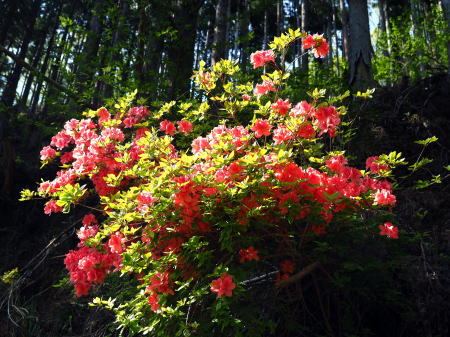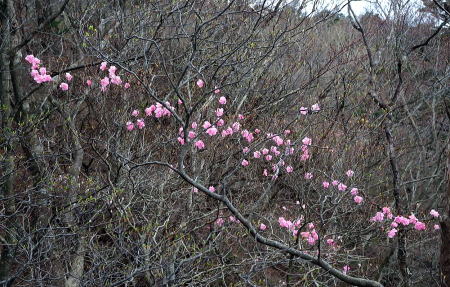"Kikuzaki Ichige" (Anemone pseudoaltaica: Ranunculaceae)
The Japanese name of the flower is given because of holding single flower
("Ichige") on the stem with the leaves that resemble chrysanthemum
leaves ("kiku"). Because one flower has one flower on one stem.
The colors of the flowers are white and purple sometime pink. There is
a related species called "Azuma Ichige", and they are very similar
and are often mistaken. I've put that photo in the bottom right, so please
find the difference. |
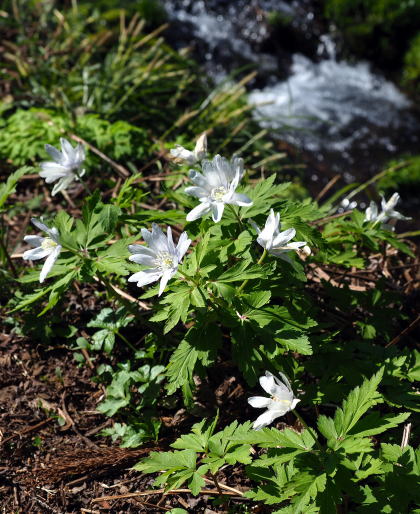 |
| |
"Adzuma ichige" |
| |
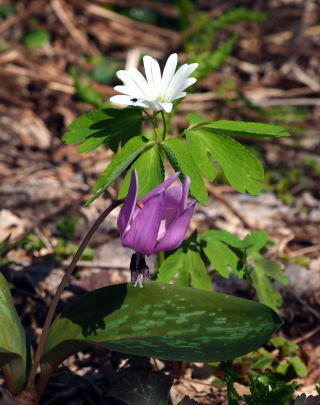
The leaves are deeply cut into - Kikuzaki ichige,
The tip of the leaves is split into 3 - Adzuma ichige
(All are Nagaoka City, Niigata Prefecture)
|
|
|
|
|
In spring the stars are also shining on the ground - blue flowers such
as Veronica and Ajuga.
Birdeye Speedwell "Ouinuno Fuguri"
(Veronica persica:Plantaginaceae)
|
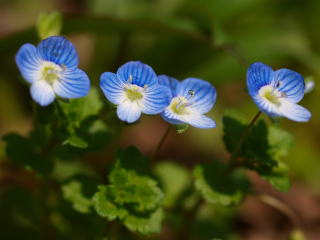 |
In the green mountains following stars are also shining
| |
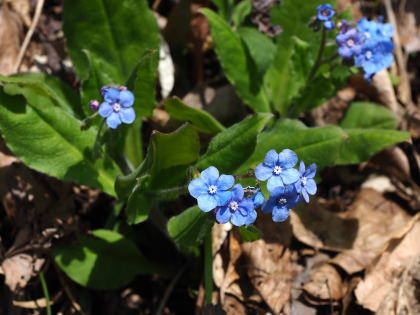 |
|
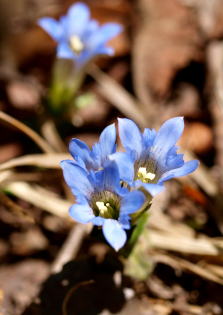 |
| |
Navelwort "Yamaruri-sou"
(Omphalodes japonica:Boraginaceae) |
|
"Haru-lingdou"
(Gentiana thunbergii) |
| |
A kin of forget-me-not. |
|
|
Dogtooth violet "Katakuri" (Erythronium japonicum:Liliaceae)
"Katakuri" is a Spring Ephemeral. When the trees have no young
leaves in early spring, it enjoyes plenty of sunlight on the forest floor
to open the flowers, and it disappears from the ground when the young leaves
begin to cover. It spends several years underground before germination,
and appears only in early spring. It is a phantom flower. |
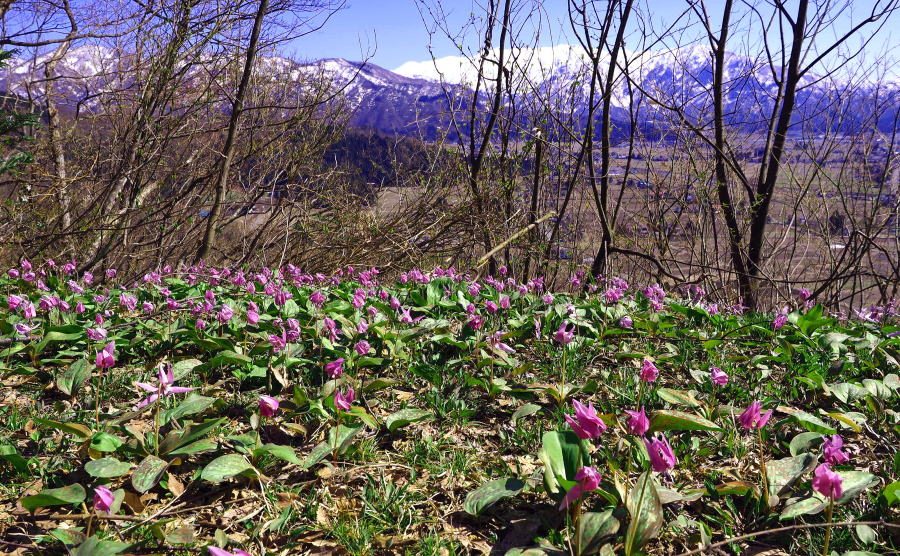 |
(At Mt. Rokumangi, Minami-uonuma City, Niigata Prefecture, behind
is Mt. Makihata)
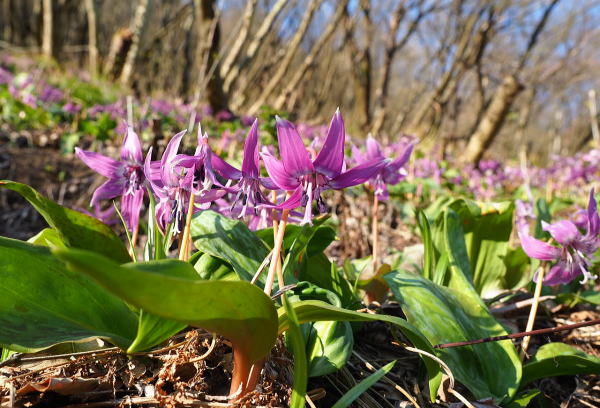 |
|
The flower has been keeping deep relationship with people's lives since
ancient times. Not only the bulb produces starch but the poets of the flower
were collected in the Anthology of Myriad Leaves.
Since it blooms in early spring when there are few insects, the nectar
mark around the pistil informs the insects of the presence of nectar, and
the sweet liquor from the seeds attracts ants to spread;
In Senami area at the foot of Mt. Hakusan, there is an area of approximately
120,000 m2 (three times of Tokyo Dome size), but five years ago, it suddenly
appeared when cutting trees or bushes to develop trail, and now became
the largest colony in Japan. |
| (Hakusan City, Ishikawa Prefecture) |
|
|
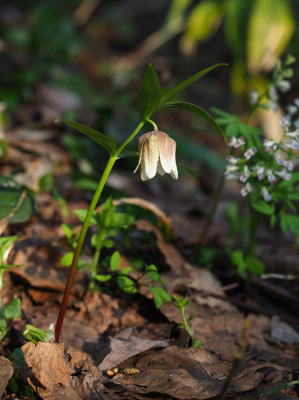 |
|
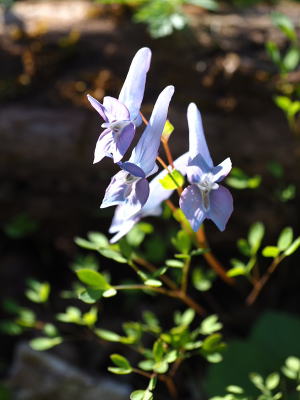 |
These flowers are also spring fairies. |
| |
Fritillaria "Koshino-kobaimo"
(Fritillaria japonica koidzumiana: Liliaceae) |
|
Corydalis "Yama-engosaku"
(Corydalis lineariloba:Papaveraceae) |
|
| |
(At Mt. Rokumangi, Niigata Prefecture) |
|
(Hakusan City, Ishikawa Prefecture) |
|
| |
|
|
|
|
| |
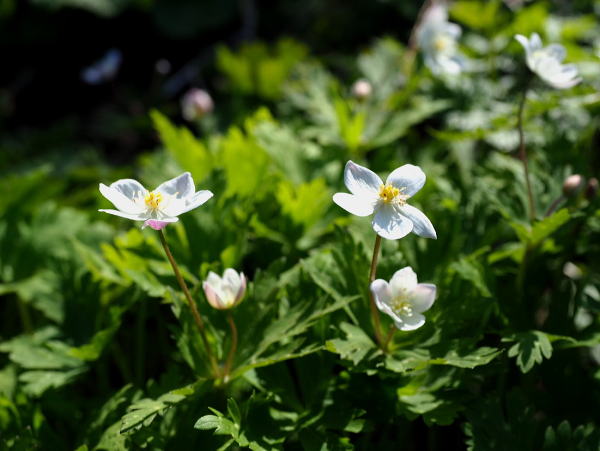 |
”Ni ring-sou"
(Anemone flaccida:Ranunculaceae)
As the Japanese name suggests (Ni means two) it has usually two flowers,
but sometimes one flower or three. Complicatedly there is another species
with three flowers -;(Anemone stolonifera). The way to distinguish them
is the shape of petioles - there
is no petioles in Anemone flaccida.
(Hakusan City, Ishikawa Prefecture) |
|
| |
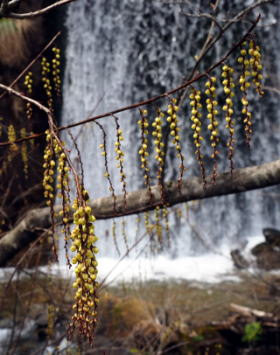 |
|
 |
| |
Spiketail"Kibushi"
(Stachyurus praecox:Stachyuraceae) |
|
Asian Umbrella Leaf "Sankayou"
(Diphylleia grayi: Berberidaceae) |
| |
The fruit was used as a substitute for the black dye quintet. |
|
Distributed in north regions. The leaves are shaped like fluff and have
two large and small leaves. Flowers become translucent when wet. |
| |
(Hakusan City, Ishikawa Prefecture) |
|
(Nagaoka City, Niigata Prefecture) |
|
|
Japanese wild ginger "Koshino kan-aoi"
(Asarum megacalyx:Aristolochiaceae)
From the color and shape you can't really imagine that it is a flower.
It does not care about the color because it uses an odor to attract ants
and let them carry pollen (this is energy saving than making the flower
colorful). So, the flowers bloom near the ground.
(Nagaoka City, Niigata Prefecture)
|
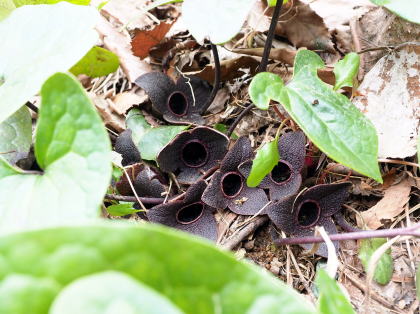 |
|
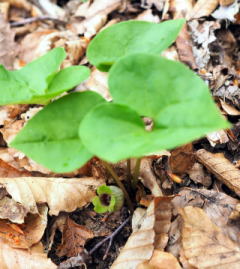 |
Siebold's wild ginger "Usuba-saishin"
(Asarum sieboldii:Aristolochiaceae)
This is a close spices of the above. The flower is still green when it
is in the bud, and then turns black purple.
(Oze, Katashina Village, Gunma Prefecture) |
|
|



